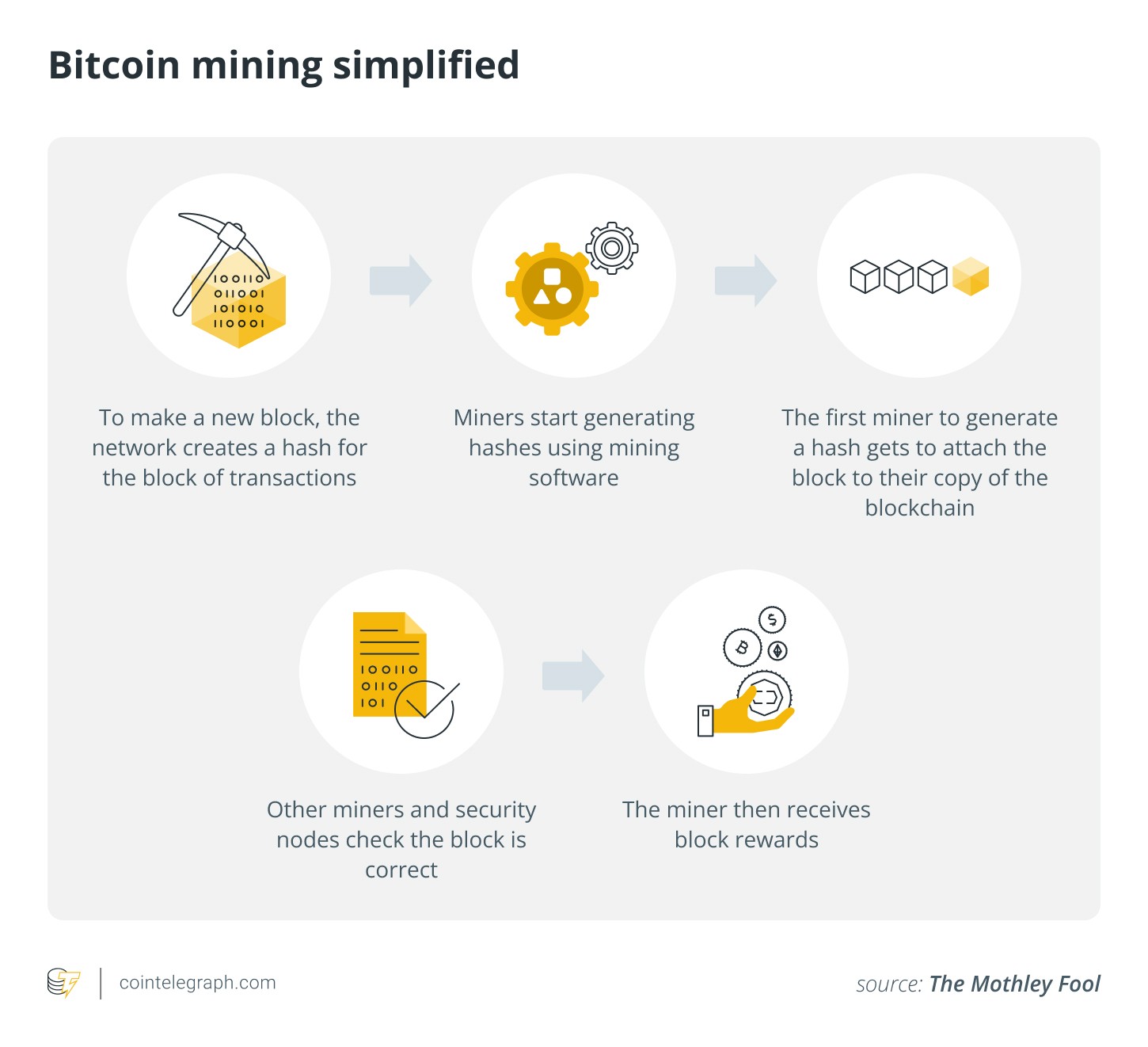
Understanding Bitcoin Mining in 2025: Hashrate and Rewards Demystified
Bitcoin mining ensures the security and functionality of the BTC network by gathering pending transactions and organizing them into blocks. Miners continuously attempt hashing (trial and error) until they generate a hash that matches the network’s difficulty requirements. The miner that succeeds first announces their block, and upon verification from the network, they receive a reward.
What is Bitcoin Mining?
93% of Bitcoin miners now utilize specialized hardware known as ASIC machines, often joining mining pools to enhance their income stability.
Bitcoin miners compile pending transactions into blocks and perform numerous hashing attempts to reach a result that fulfills the network’s difficulty target. The first miner to provide a valid hash propagates their block throughout the network, earning rewards upon verification.
If a different miner achieves the same before the previous one, the first miner’s result is rendered meaningless, termed a “stale block,” necessitating the initiation of a new block with a fresh set of transactions. As per 2025, the block reward stands at 3.125 BTC, following the halving event in April 2024. Additionally, miners may gain from transaction fees that fluctuate with network demand.
How a Block is Found
The process of mining on the Bitcoin network consists of:
- Creating a Candidate Block: A miner constructs a block from unsolved transactions.
- Coinbase Transaction: This transaction mints new BTC and claims transaction fees.
- Hashing: The miner performs repeated hashing of the block’s header while varying the nonce.
- Broadcasting the Block: After validating a block, the miner shares it with the network for independent verification from nodes before it is integrated into their blockchain copy.
An interesting fact is that Bitcoin’s mining time of around 10 minutes was designed to strike a balance between swift confirmations and preventing simultaneous block discoveries.
Mining Rewards Post-2024 Halving
2024’s halving event saw the block reward decrease from 6.25 BTC to 3.125 BTC, with daily blocks mined totaling around 144.
This fixed reward is crucial as the network issues approximately 450 new BTC daily, exclusive of transaction fees. Notably, spikes in transaction fees were observed in April 2024 due to the activity surge from the introduction of a new token protocol named Runes, which overwhelmed the network with transactions.
The Hashrate and Difficulty Dynamics
The mining power quantified as hashrate visually reflects the computing capability protecting the Bitcoin network.
Mining difficulty adjusts roughly every two weeks based on the hashrate, maintaining approximately 10-minute block intervals.
- An increase in hashrate leads to quicker block production, prompting a subsequent uptick in difficulty.
- Conversely, a decrease in hashrate incurs longer block timelines, compelling a difficulty reduction.
In 2025, both hashrate and difficulty metrics escalated to unprecedented levels, with newer, efficient ASIC machines continuously coming online.
Hardware and Setup in 2025
Efficiency is paramount in Bitcoin mining, which has significantly evolved from hobbyist setups to sophisticated industrial configurations.
ASICs dominate contemporary mining farms, with an efficiency metric defined in joules per terahash (J/TH). Rig types include air-cooled, hydro, and immersion systems, each presenting unique strengths and operational demands.
Mining Pools and Payouts
Most miners utilize pools, consolidating their computing power for more predictable earnings.
Major mining pools like Foundry USA and AntPool encompass substantial network shares, providing miners with stable payouts based on their contributions while minimizing waiting time for block rewards.
Energy and Geography Impact
Profitability for miners hinges significantly on energy prices, local regulations, and geographical factors.
As of May 2025, Bitcoin’s electricity consumption was estimated at around 190 terawatt-hours—a figure comparable to the annual energy consumption of medium-sized nations. In the U.S., estimates of crypto mining’s share of national power usage vary between 0.6% and 2.3%.
In summary, Bitcoin mining in 2025 presents a dynamic landscape influenced by technological advancements, economic trends, and regulatory frameworks.


